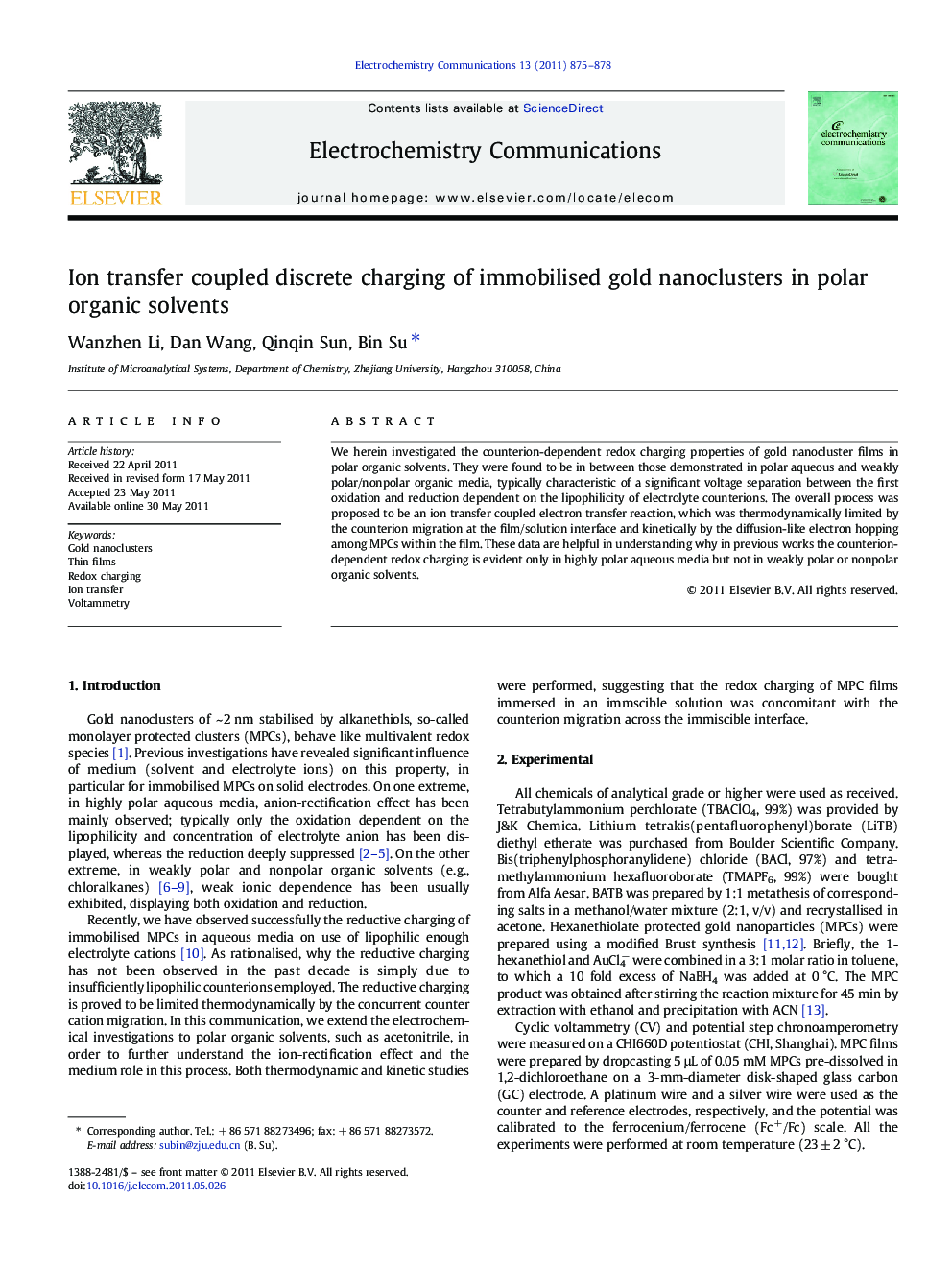| Article ID | Journal | Published Year | Pages | File Type |
|---|---|---|---|---|
| 179998 | Electrochemistry Communications | 2011 | 4 Pages |
We herein investigated the counterion-dependent redox charging properties of gold nanocluster films in polar organic solvents. They were found to be in between those demonstrated in polar aqueous and weakly polar/nonpolar organic media, typically characteristic of a significant voltage separation between the first oxidation and reduction dependent on the lipophilicity of electrolyte counterions. The overall process was proposed to be an ion transfer coupled electron transfer reaction, which was thermodynamically limited by the counterion migration at the film/solution interface and kinetically by the diffusion-like electron hopping among MPCs within the film. These data are helpful in understanding why in previous works the counterion-dependent redox charging is evident only in highly polar aqueous media but not in weakly polar or nonpolar organic solvents.
Graphical abstractFigure optionsDownload full-size imageDownload as PowerPoint slideResearch highlights► Ion-dependent, quantised redox charging behavior of gold nanocluster thin films in polar organic solvents. ► Diffusion-like electron hopping in nancluster thin films bathed in polar organic electrolytes. ► Solvent role in the nanocluster quantised charging.
